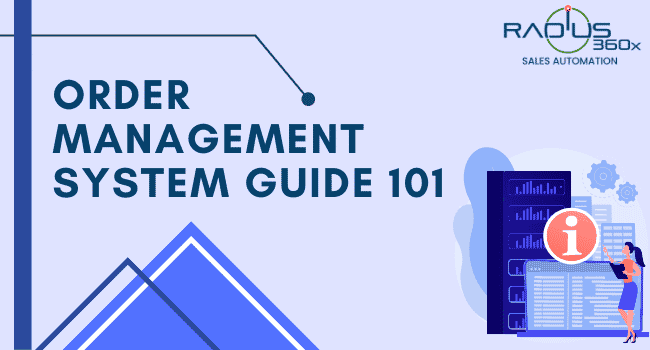
Suppose you are a newbie business owner selling prime quality products. Yet, your customers might be facing some issues. For instance, delay in deliveries, update on damaged products, etc. It could be avoided with a proper Order Management System.
An Order Management System is an essential part of operations for e-commerce and other businesses. Modern order management is more complex than earlier. But, it becomes easier to handle the supply chain with OMS as it’s an interconnected ecosystem. It allows you to set up & manage disparate systems conveniently. As a result, you get the opportunity to scale up your business.
It increases B2C and multichannel distribution. Therefore, retailers should gear up to handle the allocation of all channels. An OSM connects almost every facet of a business’s operation.
You are highly mistaken if you think the Order Management System includes only fulfilling and shipping items. To satisfy customers, smooth synchronization of the Order Management System and constant communication are necessary. Here’s the detailed process of an Order Management System.
The process starts when a customer places an order online, in-store, or over a call. Here the order gets logged in to the online platform, with the payment terms, delivery place & time.
In the second step, a connected system or warehouse manager checks the order against the inventory ledger to confirm if they are in a position to fulfill the order. If an inventory is low, additional inventory is purchased from the vendor via ERP or another purchasing platform.
The next step comprises logging the order in an accounting ledger, which is done by a connected system or finance manager. The order is recorded as cash or account receivable according to the order and payment terms. An invoice is generated and which is sent to the customer at this stage.
Here, the order is transferred to the fulfillment partner. In the case of an eCommerce order, the partner purchases a shipping label through a carrier, and he picks it up and delivers it to the customer. But if it’s a wholesale order, you need to coordinate with the shipping provider to pick up and deliver the order.
Lastly, the fulfilment partner updates you about the shipped order via a connected system. The payment is made as per pre-decided terms. Also, the connected system updates the ledger account with the payment.

If your small e-commerce business is growing, then the Order Management System is exactly what you need to handle orders. With OMS, the process from placing to receiving an order becomes less complex for both the brand and its customer. It provides a streamlined and seamless customer experience. A firm can sell through various channels with an Order Management System that tracks and records orders more effectively and productively. It secures order errors, customer dissatisfaction, and lost revenue because of late updates.
Order Management System is completely automated. So it decreases human errors in orders and invoicing, saving time & money. Also, the time saved can be used in analyzing the data.
With the real-time capabilities of the Order Management System, you can distribute shipment-related data. As a result, inventory management becomes easy with OMS. Besides enhancing inventory accuracy, it protects companies from overselling inventory and bringing utmost customer satisfaction.
Order Management System is one in all substitute for your separate accounting system. For instance, software for inventory management, marketing, shipping, and customer service. You can manage all these things in a unified Order Management System. Moreover, it gives you the option to compare shipping rates of national and regional logistics too. You can save money by choosing the best pocket-friendly option.
You can access your Order Management System online from any location. It leads to stronger data control, enhanced customer service, and efficient order processing. Besides this, the real-time data display makes your company proactive to any issues.
Now you have a fair idea of how the Order Management System can change your company’s order processing. The next step is to choose the right OMS for your company. But before that, you need to consider the following things:
Although an Order Management System system is a one in all system for various accounting departments, it still requires integration with third-party sales or marketing platforms. You must consider. Along with considering whether integration is built direct or indirectly, you must also check whether it is managed in-house or outsourced. Analyzing these things could help you bring reliability and efficiency to your system. The best OMS system doesn’t demand change in your whole existing setup.
Your business is dependent on suppliers, distributors, or third-party logistics. So you must see how an Order Management System is going to affect your whole supply chain. Maybe the new OMS makes processing orders from suppliers more difficult or it may not allow you to use a third-party logistics provider. In this case, looking for an alternative system is advisable.
Data is the new oil in the modern world. To ensure that the Order Management System provides high reporting capabilities, it should allow you to monitor product and channel performance periodically. It must give you the power to forecast data-driven demands. Besides this, it must provide customer information to enhance marketing campaigns. OMS offering depth of reporting should be on your priority list.
All small business owners dream of turning their brainchild into a large company. If you are one of them, think about what changes you will be making while your company scales up. You may have to increase the number of platforms or the order volume. Picturing your long-term goal while selecting the Order Management System will help you find the most reliable one.
When choosing an Order Management System, consider what services they are providing. Clarify with the OMS vendor whether they will provide assistance and manage your switchover? Will they provide training sessions on the new setup for your employees? Considering the longer term, the vendor should provide 24/7 support. Plus, consultation should be there to optimize workflows and instill best practices.
Once you take into consideration all the above-stated things, firstly, you need to discuss & analyze the goals and objectives in upgrading your system. Secondly, draft a proposal stating exactly what you need from the OMS. Include order volumes, sales channels, and plans in the proposal. Thirdly, send this proposal to the best vendors you find after researching them properly. Fourthly, compare the offerings of all the vendors who replied to your proposal and choose the best possible Order Management System. Lastly, closely work with the vendor to succeed with their OMS software.
However, the cost of installation and updates of an OMS can be expensive. So, small business owners pick the option of outsourcing it. If you are also looking for someone to run your order management system, schedule a quick demo now!